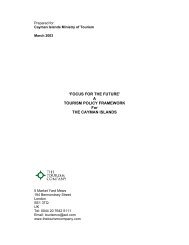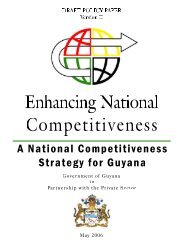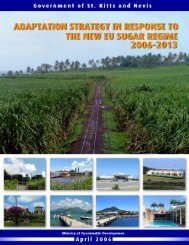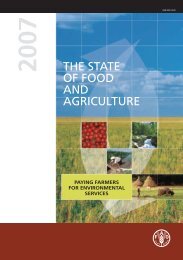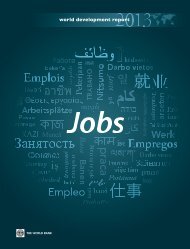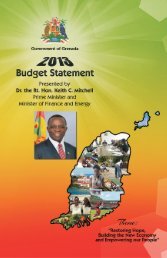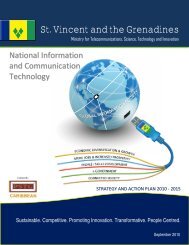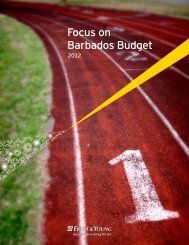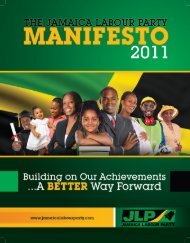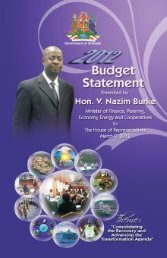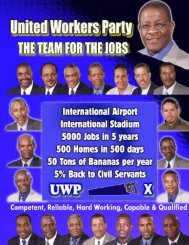Business Removing
Doing Business in 2005 -- Removing Obstacles to Growth
Doing Business in 2005 -- Removing Obstacles to Growth
- No tags were found...
Create successful ePaper yourself
Turn your PDF publications into a flip-book with our unique Google optimized e-Paper software.
DATA NOTES 83<br />
Assumptions about the property<br />
To make the property comparable across countries, ten assumptions<br />
are employed. The property:<br />
• Has a value of 50 times income per capita.<br />
• Is currently fully-owned by another domestic limited liability<br />
company.<br />
• Has no mortgages attached and has been under the same<br />
ownership for the past 10 years.<br />
• Is adequately measured and filed in the cadastre, registered<br />
in the land register and free of title disputes.<br />
• Is located in a peri-urban commercial zone and no rezoning<br />
is required.<br />
• Consists of land and a building. The land area is 6,000<br />
square feet (557.4 square meters). A warehouse of 10,000<br />
square feet (929 square meters) is located on the land. The<br />
warehouse is 10 years old, in good condition and was constructed<br />
following all safety standards, building codes and<br />
other legal requirements.<br />
• Will not be subject to renovations or additional building<br />
following the purchase;<br />
• Has no trees, natural water sources, natural reserves or<br />
historical monuments of any kind;<br />
• Will not be used for special purposes and no special permits<br />
for residential use, industrial plants, waste storage,<br />
certain types of agricultural activities, etc. are required;<br />
• Has no occupants (legal or illegal) and no other party<br />
holds a legal interest in it. The purchasing company will<br />
take vacant possession of the property.<br />
Procedures measure<br />
A procedure is defined as any interaction of the buying or<br />
selling company, their agents (if the agent is required by law)<br />
or the property itself with external parties, including government<br />
agencies, inspectors, notaries, lawyers, etc. Interactions<br />
between company officers and employees are not considered.<br />
All procedures that are legally required for registering property<br />
are recorded, even if they may be avoided in exceptional<br />
cases. It is assumed that the purchasing company follows the<br />
fastest legal option available. Although the business may use<br />
lawyers or other professionals where necessary in the registration<br />
process, it is assumed that it does not employ an outside<br />
facilitator in the registration unless required to by law.<br />
Cost measure<br />
Only official costs are recorded. These include fees, transfer<br />
taxes, stamp duties, and any other payment to the property<br />
registry, notaries, public agencies or lawyers, if required by<br />
law. Other taxes, such as capital gains tax or value added tax<br />
(VAT) are excluded from the cost measure. If cost estimates<br />
differ among sources, the median reported value is used.<br />
Total costs are expressed as a percentage of the property<br />
value, calculated assuming a property value of 50 times income<br />
per capita.<br />
Time measure<br />
Time is recorded in calendar days. It is assumed that the minimum<br />
time required for each procedure is one day. Time captures<br />
the median duration that property lawyers or registry<br />
officials indicate as necessary to complete a procedure. It is<br />
assumed that the entrepreneur does not waste time and commits<br />
to completing each remaining procedure without delay.<br />
If a procedure can be accelerated for an additional cost, the<br />
fastest procedure is chosen. If procedures may be undertaken<br />
simultaneously, it is assumed that they are. It is assumed that<br />
the parties involved are aware of all regulations and their sequence<br />
from the beginning. Time spent on gathering information<br />
is not considered.<br />
The methodology is developed in “Property,” an ongoing research<br />
project by Simeon Djankov, Facundo Martin and<br />
Caralee McLiesh.<br />
Getting credit<br />
Doing <strong>Business</strong> constructs measures on credit information<br />
sharing and the legal rights of borrowers and lenders. One set<br />
of indicators measures the coverage, scope, quality and accessibility<br />
of credit information available through public or private<br />
credit registries. A second set describes how well collateral<br />
and bankruptcy laws facilitate lending.<br />
Data on credit information sharing are built in two stages:<br />
first, the respective banking supervision authorities as well as<br />
public information sources are surveyed to confirm the presence<br />
or absence of public credit registries and private credit<br />
information bureaus. Second, when applicable, a detailed<br />
survey on the public or private credit registry’s structure, law,<br />
and associated rules collects data in 5 areas:<br />
• Coverage of the market<br />
• Scope of information collected and distributed<br />
• Access to the data<br />
• Quality of data<br />
• Legal framework for information sharing and quality of<br />
data.<br />
The surveys were adapted from previous versions designed in<br />
cooperation with the “Credit Reporting Systems Project” in<br />
the World Bank Group and with input from Professor Marco<br />
Pagano of the University of Naples. Survey responses are verified<br />
through several rounds of follow-up communication<br />
with respondents as well as by contacting third parties and<br />
consulting public sources. In more than a third of cases, the<br />
survey data are complemented by teleconference calls.



